My day begins before the sun rises as I hear the first pilgrim rustling around the albergue (hostel). I get up, swing on my backpack, put on my headlamp, say a prayer and start walking. At the first open café, I have a quick breakfast, then continue walking—a relentless ascent and descent on hard pavement and rocky paths, in the heat, in the rain, in the cold, until I reach my destination some 20-30 kilometres later.
The day ends with finding a place to stay and, hopefully, a hot shower. After laundering a few clothes that never seem to come out clean, I rest and elevate my feet. Then dinner, followed by sleep. I repeat this routine the next day and the next.
Life on the Camino is simple. My only job is to walk and be grateful.
THE WAY OF ST. JAMES
For a thousand years, people have walked the legendary Camino de Santiago, experiencing the spirit of the Camino and life as a pilgrim. Camino de Santiago means “the way of St. James,” and is the name given to a network of ancient pilgrim routes that lead to the tomb of St. James in Santiago de Compostela, the capital of the Galicia region in Spain.
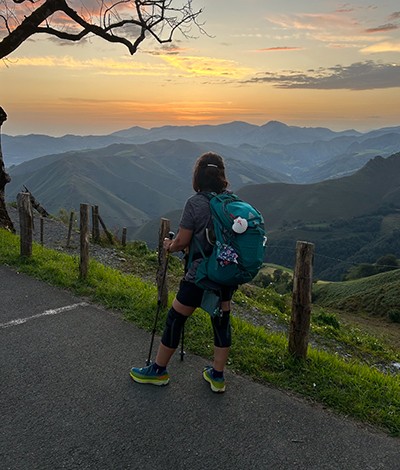
Although there are dozens of routes, one of the most common is the Camino Frances, or the French Way, which begins in Saint-Jean-Pied-de-Port, France, before crossing the Pyrenees Mountains into Spain. This is where most of the medieval European pilgrimage paths converge, and where I began my journey on September 5, 2023. Every step along the way brought new discoveries and unforgettable memories.
More than 500,000 people walk the Camino de Santiago every year. A pilgrim who walks a minimum of 100 kilometres on any route earns the compostela (certificate of accomplishment). You don’t really need a map to walk the Camino—the route is marked by yellow arrows painted on signposts. You will also often see a scallop shell, which has become an iconic symbol for the Camino—with many stories, myths and legends to explain why. Most pilgrims choose to wear a scallop shell on their backpack to show that they are a pilgrim.
On October 10, after 35 days and 700 kilometres, I reached Santiago de Compostela. It was one of the most life-changing experiences I’ve had.
WALKING WITH GOD
People walk the Camino for many different reasons. For some, it is a spiritual quest or a religious journey. For others, it is the need for time alone, to enjoy a period of reflection and inner peace, to unplug from everyday life and recharge in nature. Some look at it as a physical challenge, the feeling of “I did this for myself, by myself, on my own.”
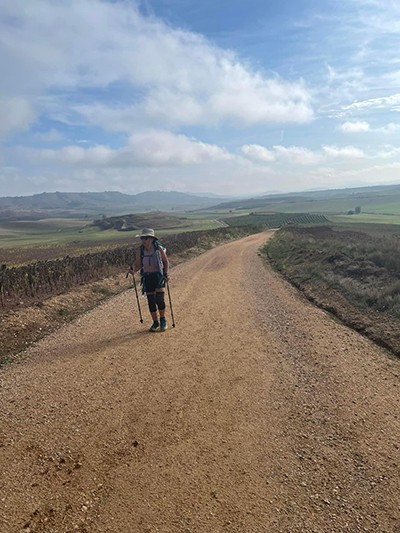
For me, walking the Camino was a spiritual experience that allowed me to deepen my faith and connect with God. It was indeed a journey of faith, humility and trust. It can be a daunting prospect to travel to a foreign land to walk with random strangers. Walking across a country—following yellow arrows, trusting the path—is not your average holiday.
But God called me to this journey and prepared the way and my heart. About six weeks before departure, I debated whether to cancel my trip due to a knee injury. With a combination of physical therapy and a lot of prayers, my knee healed enough for me to walk.
On the Camino, I prayed for God to guide my steps along the way. I trusted him on the most challenging parts of the journey. Each challenge was an opportunity for growth. God does provide everything you need. There were churches in every town, but I saw Christ in the faces of the couple who offered us a ride, in the gentleman who offered me half of his sandwich because I said I was hungry, in the woman who offered me antihistamines. He was everywhere.
I felt God’s presence as I walked through forests and over the mountains, my mind at rest. I listened to the gentle breeze, the rustling of the leaves, feeling the hot sun on my face. There was no need to listen to music, like I usually do while walking in Canada. I was content in peaceful silence, knowing that God was walking with me.
MOVING FORWARD
The Camino gives you a deep sense of self that comes from learning how to be uncomfortable while still moving forward and maintaining a positive attitude. Every day on the Camino was a challenge and, at the same time, a privilege and joy.
It is said that you just need to survive the first 10 days of the Camino, and the body and mind will adapt. How true that statement was. The Camino makes you realize how strong you are. I felt my backpack and trekking poles become an extension of my body.
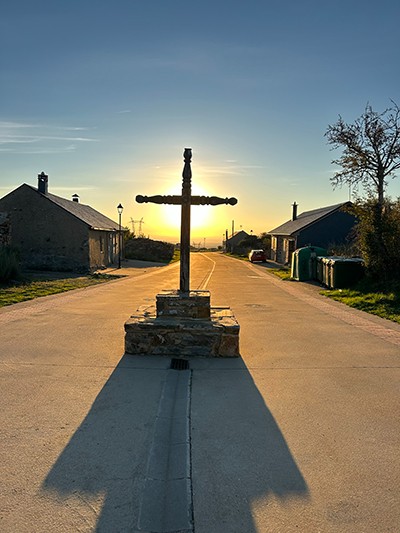
Each day we had to focus on taking care of ourselves to make it to the next destination. Foot care was the top priority, along with trying to eat healthy meals and sleep—which could be challenging in dorm-style hostels. I was thankful for earplugs. A private room with real bed sheets and towels was heavenly. After blisters, occasional bedbugs were the bane of every pilgrim’s life—it does happen. But that’s all part of the Camino and you learn how to embrace it.
Not one day did I complain or wish I had not been there, even on the hardest day. I thanked God for every day I woke up and was healthy and able to walk. Every day was a testament to resilience and determination. I felt a sense of profound accomplishment for each day completed.
GOOD JOURNEY
But the Camino is so much more than walking. It’s also about the people you meet from all around the world. The simplicity of the days, the kindness of people along the way. Sharing a meal as total strangers and becoming friends, then wishing each other buen camino (good journey). People come in and out of your life on the Camino.
There were many solo female pilgrims on the Camino, from a wide range of ages and stages in life. I met a woman in her 70s walking her fourth Camino. Some had never travelled alone before but were unable to find a travel companion and faced the choice of missing out on the adventure of a lifetime or being brave and going alone.
I walked with one gentleman from the United States who had cancer and another from Germany who was slow because he’d had surgery on his leg. Whenever he reached his destination, long after everyone else, he was met with cheers.
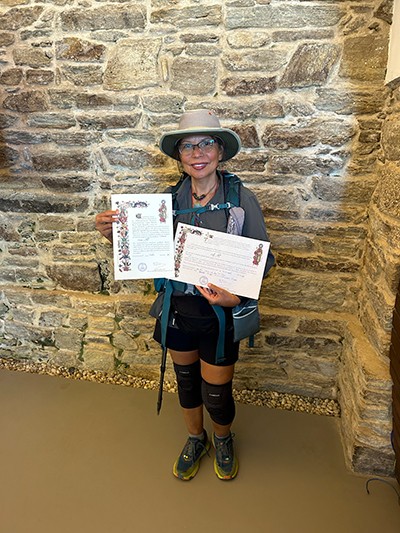
I also met a couple walking to honour their son, who had always wanted to walk the Camino but had passed away before he could. So many incredible people and interesting stories. I prayed for my fellow pilgrims every day.
THE JOURNEY CONTINUES
When I returned to Canada, the first few weeks were disorienting. After sleeping in so many different beds, I woke up in the middle of the night wondering where I was, before realizing I was at home. I stared in my closet, unable to decide what to wear, before remembering how little I needed on the Camino. I took forever to get out the door for my morning walk, when I could get myself out of bed, strap on that heavy backpack and be out the door in 10 minutes on my trip.
On the Camino, you accept the challenges. You wait patiently while a herd of sheep crosses your path. Here, I groan because I hit a red light.
You learn to appreciate the simple joys, like finding a stale pastry in your backpack. You enjoy and savour it like it’s the best thing you’ve had all day—because when you’re hungry, it is.
I don’t know why the Camino brought out the best version of myself. It must be the dust in Spain. How do I become that person at home? Indeed, it is when we are back home that the real Camino begins. There are no yellow arrows to guide me, but Jesus will.
A PILGRIM'S JOURNAL

Day 1: SAINT-JEAN-PIED-DEPORT TO ORISSON
This morning, I left Saint-Jean-Pied-de-Port, France, and started my trek to Orisson before the day got too hot. It was only 7.5 kilometres away, but it took me more than four hours as I began the climb over the Pyrenees. I was rewarded with a glorious sunrise and a breathtaking view of the mountains. I arrived at the albergue—a hostel for pilgrims—to rest for the big descent tomorrow. What goes up, must come down. I am off to Roncesvalles, Spain, tomorrow—a 25-kilometre walk.
Day 16: FRÓMISTA TOCARRIÓN DE LOSCONDES
I left Frómista in the dark. It was chilly, then hot. The mostly gravel trail turned to pavement, then to wet soil, then to mud. It was hard on my knees. When I arrived at Carrión de los Condes, the café was closed, which means I had to walk several more kilometres. Walking the Camino isn’t always pretty and walking in the dark can be unnerving. The Camino is hard, but amazing and spectacular at the same time. I see the sun rising. I smell the fertilizer as I walk by wide open fields. Then I finally reach the quaint little town with its beautiful church and get a chance to rest for a moment.
Day 35: SANTIAGO DE COMPOSTELA
Arriving at Santiago de Compostela was an overwhelming feeling. My eyes welled up with tears as I attended the Pilgrim’s Mass and witnessed the swinging of the famous Botafumeiro in the cathedral. After the quietness and solitude of the Camino, this city overwhelms me. I also had to say an emotional farewell to my walking sticks. They served me well.
Day 37: PORTO, PORTUGAL
The most beautiful things in life are not material things. They are people, places and laughter along the way and no doubt we’ve had all of them and then some these past few weeks. What makes our last night in Porto special before heading home? Millions of people here and running into friends we’ve met along “The Way.”
SALLY HILL is a senior soldier, young people’s co-ordinator and administrative assistant at The Salvation Army Georgina Community Church, Ont.
This story is from:




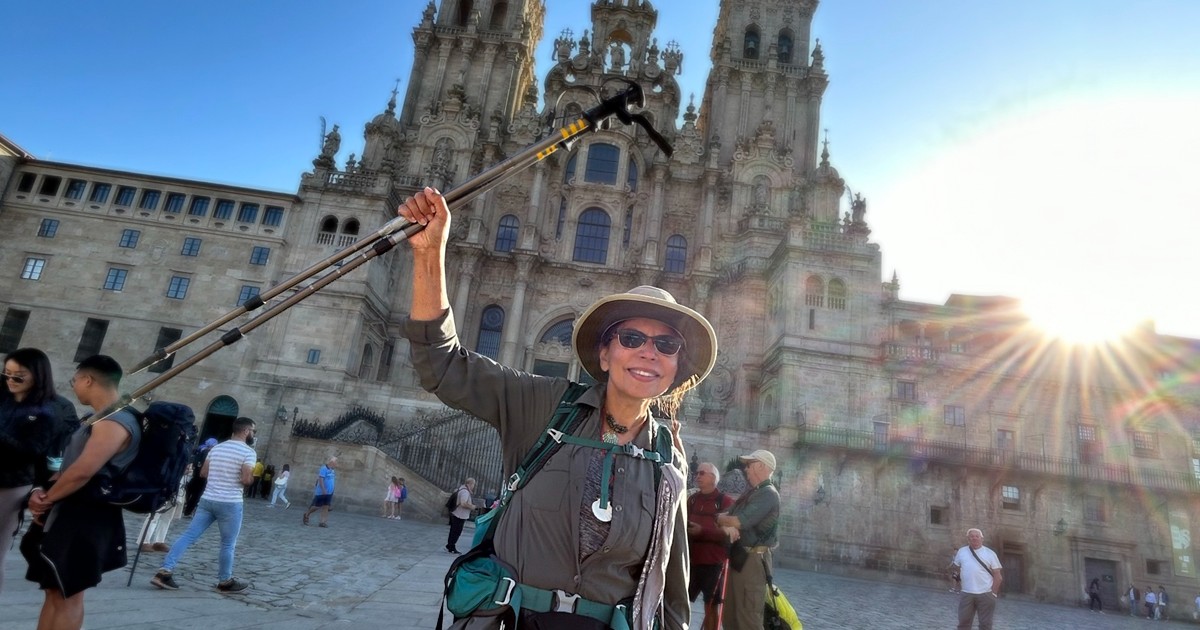
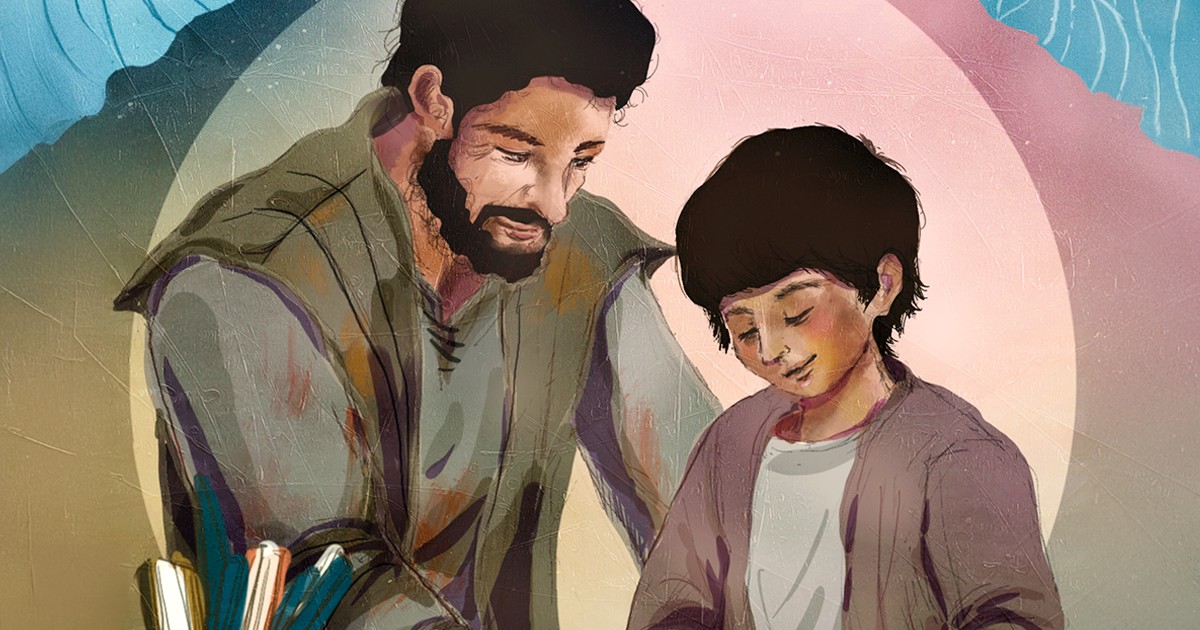
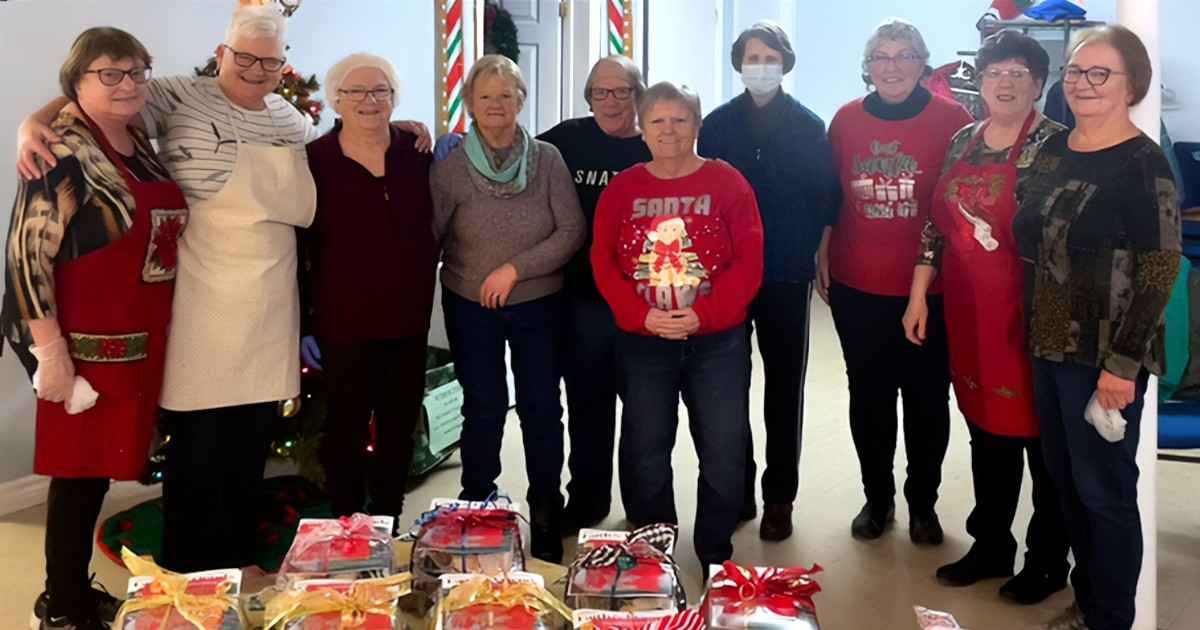



Comment
On Friday, August 16, 2024, Daniel Roode said:
On Tuesday, July 9, 2024, Colleen Winter said:
Good for you Sal! I am sure it was a beautiful journey with the Lord and fellow pilgrims along the way. A lifetime experience that will stay with you. God bless! Colleen Winter
On Monday, July 8, 2024, Nadine Langlois said:
Thank you sally for sharing. I felt and understood a lot of how you described your walk and your feelings. I feel some of that when I watch the ocean roll in and out at Myrtle Beach. My parents, Harold and Marjorie Pearson soldiered at Georgina for a number of years so I felt a closeness to you and your story. Congratulations on your accomplishment and the changes it brought. It would be nice to do this in a group you were brave to do it alone.
Leave a Comment